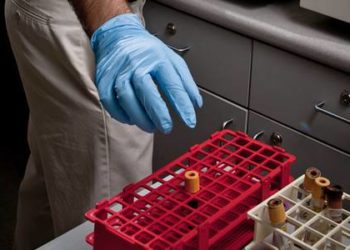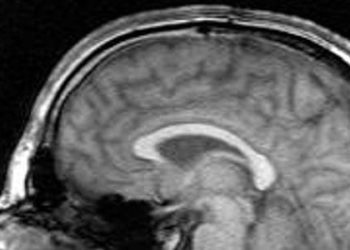Key characteristics of high mitotic rate melanoma elucidated
1. High mitotic rate melanoma was clinically more likely to present in elderly male patients, and more frequently presented as a rapidly growing lesion on the head and neck that may be amelanotic.
2. High mitotic rate melanomas were associated with thick and ulcerated nodular tumor subtypes and therefore were associated with a more aggressive histopathologic subtype.
Evidence Rating Level: 3 (Average)
Study Rundown: Mitotic rate, a marker of cell proliferation, has been previously associated with decreased disease-free survival in patients with melanoma. However, its clinicopathologic associations have not been well established. The authors of this study sought to identify characteristics associated with high mitotic rate melanoma, with the ultimate objective to aid earlier detection of these aggressive tumors. High mitotic rate melanoma was clinically associated with a distinct phenotype including rapidly growing lesions, amelanosis, age ≥70, male gender and location on the head and neck. Low mitotic rate was associated with family history of melanoma and history of blistering sunburns. The study had a large cohort, but was limited in its retrospective study design. Future studies are necessary to explore implications for earlier detection and better management of patients with this aggressive tumor type.
Click to read the study in JAMA Dermatology
Relevant Reading: Prognostic Significance of Mitotic Rate in Localized Primary Cutaneous Melanoma
In-Depth [case-control]: 1441 patients who had 1500 primary invasive melanomas between 2006-2011 were retrospectively selected for the study from the Victorian Melanoma Service medical record. Demographic information, phenotypic markers, historical features, tumor presentation, and clinical exam information was obtained. Mitotic rate and histopathologic information was determined by two expert dermatopathologists. Mean mitotic rate was 2.8 mitoses/mm2. Univariate analysis showed that increasing mitotic rate was strongly associated with older age ≥70 (OR 2.1; 95% CI 1.7-2.8), male gender (OR 1.5; 95% CI 1.3-1.8), the presence of solar keratosis (OR 1.3; 95% CI, 1.1-1.6), and rate of growth (for rate of growth ≥2mm/mo, OR 14.6, 95%CI 10.0-21.2). Tumors of high mitotic rate were most likely to be found by the patients themselves, possibly due to the high growth rate. Multivariate analysis of histopathologic features revealed strong positive association of mitotic rate with nodular tumor type (OR 2.3; 95% CI 1.6-3.3, p<.001), ulceration (OR, 5.9; 95% CI, 3.0-11.7, P<.001), and thickness>5mm (OR 8.8; 95% CI, 4.9-15.9; P<.001).
More from this author: Tech-aided surveillance of patients at high risk for melanoma aids early diagnosis, Indoor tanning linked to high skin cancer risk in US and abroad, Free drug samples may alter prescription habits of dermatologists, Atopic dermatitis may be more persistent than previously understood
Image: PD
©2012-2014 2minutemedicine.com. All rights reserved. No works may be reproduced without expressed written consent from 2minutemedicine.com. Disclaimer: We present factual information directly from peer reviewed medical journals. No post should be construed as medical advice and is not intended as such by the authors, editors, staff or by 2minutemedicine.com.







